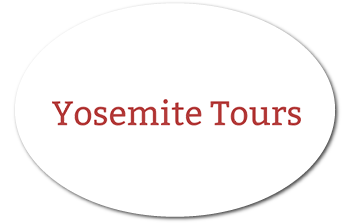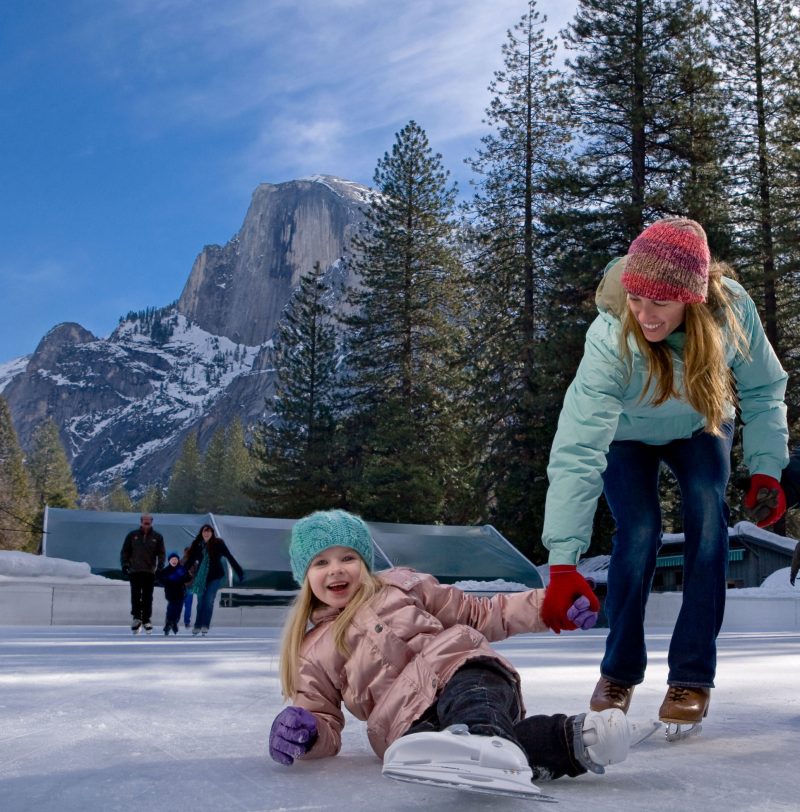About The Park
Yosemite National Park with 748,542 acres of land was established in 1890. The most popular destination in Yosemite is a Yosemite Valley where the most famous sites of the park are concentrated such as Half Dome and EL Capitan.
Yosemite National park is one of California’s and America’s most important national reserves. Yosemite National park gets close to 4 million visitors per year.
Yosemite Valley’s seven square miles consist of a main loop that most tour buses follow stopping at the main points of interest. Yosemite National park’s visitors center is located in the Yosemite Village along with shops, restaurants, the Yosemite Museum, the Indian Village, and the Ansel Adams Gallery. Tours of the valley can be taken at the visitors center. Tours from San Francisco to Yosemite National Park generally stop at the Yosemite launch which is a short distance from the Yosemite Village.
One of America’s favorites, Yosemite Park is located in California close to the border with the state of Nevada in the Sierra Nevada mountain range.
Yosemite park has taken millions of years to be created and it is constantly evolving. Yosemite Park is the result of a Glacier Tanya sliding down hill as it melted and carving the granite stone that formed a “V” shaped valley into a “U” shaped valley.
Today, natural forces are still chipping away at the shape of Yosemite National Park. Floods, land & rock slides, fires, and man are influencing the trajectory of Yosemite park. Even the famous Yosemite valley is the result of generations of Native Americans burning to promote the growth of grass for the manufacture of ornaments such as basket weaving.
Many of the trees in Yosemite park valley are not native. And to top it all off, the Yosemite park valley used to have a lake which was drained by the blasting of a natural damn by an early white settler.
But don’t frown, Yosemite park will keep on transforming long after we are all gone and there is nothing we can do to stop it.
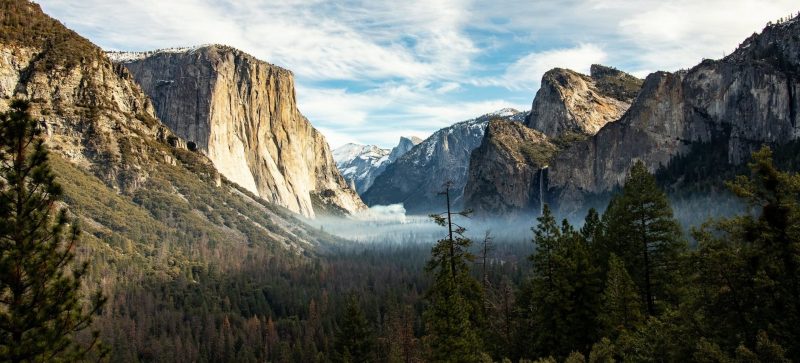
Yosemite Valley
Situated in the center part of the Sierra Nevada’s Mountain rage and rises up to 4000 feet above sea level, Yosemite Valley stretches up to 7 miles long and is roughly around 1 mile wide. Half Dome and the Bridalveil Falls are just two things that catch anybodies eye from the tunnel view of Yosemite Valley, which is located off Highway 41.
Yosemite Valley accommodates some of the world’s highest waterfalls which also cascade of granite cliffs toward the Yosemite Valley floor, such as Ribbon Falls, Nevada Falls, Vernal Falls, Bridalveil Falls and Yosemite Falls.
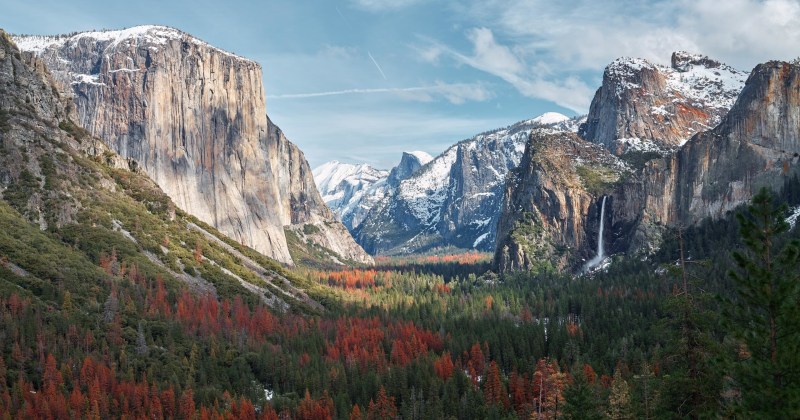
Yosemite El Capitan
Located in the heart of Yosemite and El Capitan is one of nature’s most impressive monuments standing 2900 ft. over the valley floor.
-
El Capitan is also one of the world’s greatest rock climbing challenges. Some people take days to climb to the summit of El Capitan spending the night sleeping on a bed called a bivouac that looks like a hammock. Speed climbers can reach the summit of El Capitan and as little as a few hours.
-
El Capitan is also one of the world’s greatest rock climbing challenges. Some people take days to climb to the summit of El Capitan spending the night sleeping on a bed called a bivouac that looks like a hammock. Speed climbers can reach the summit of El Capitan and as little as a few hours.
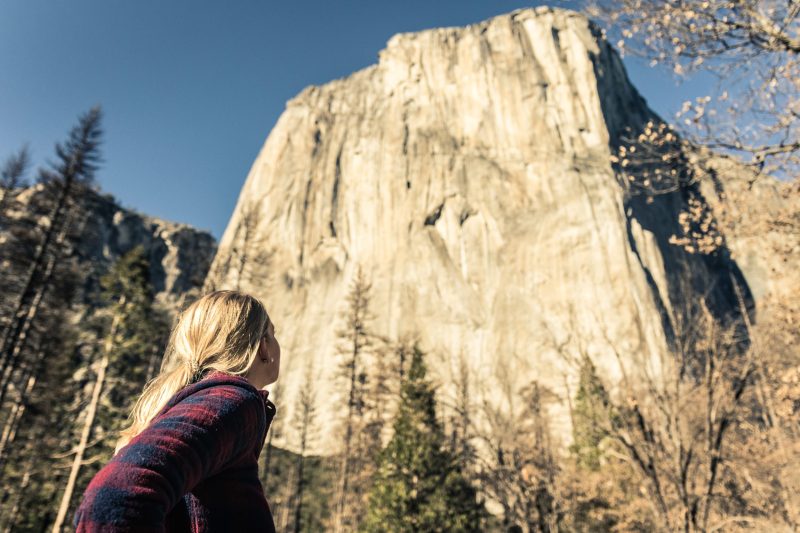
Half Dome
Half Dome is one of the most amazing sights in a Yosemite tour. Half Dome is one of the most difficult Yosemite rock-climbing challenges in the world. It takes climbers over 7 hours to conquer the 2,000 ft. face.
-
For many years, Half Dome was deemed unclimbable, but in 1919 a cable route was added to Half Dome’s eastern face, and Yosemite hikers can now pull themselves up the steep grade to the top. Weather is a major factor when hiking on Half Dome. To hike to the top and back will take at least 10 hours.
The western face of Half Dome is a sheer cliff, made up of Plutonic granite, and probably was never a full round dome. Half Dome was originally called “Cleft Rock” by the Native Americans who lived in the area. Fractures in the granite of the dome captured water, which went through freezing and thawing, pushing the rock apart and causing 20 percent of the rock to fall away, creating Half Dome’s dramatic face.
-
Lightning strikes Half Dome often during rainstorms, and in the summer months, the sun beating down on the trail to Half Dome can be intense, so be in good physical condition and prepared for the challenge!
There is a Native American legend that explains the creation of Half Dome through domestic violence. The legend tells us that a young married couple was arguing. The wife, Tesaiyac, in her despair threw a basket of acorns at her husband as he was chasing after her.
The gods, as a punishment, turned them into stone. The husband became North Dome, the basket became Basket Dome, and Tesaiyac became Half Dome. If you look closely, you can see the outlined profile of Tesaiyac on the face of Half Dome and tears running down her face.
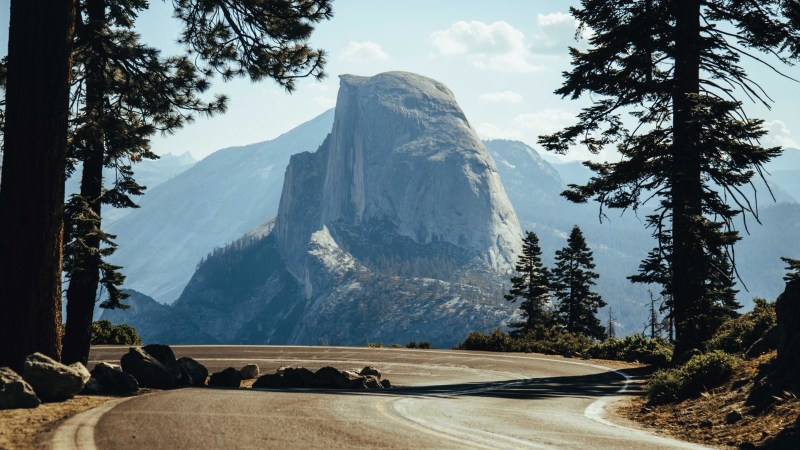
Giant Sequoias
Giant Sequoia trees are the largest of a living things on the planet and a must-see on a Yosemite tour. Giant Sequoias are neither the tallest nor the widest trees alive, but they are by volume the biggest.
-
Giant Sequoias grow along the Sierra Nevada mountain range at an elevation of about 6,000 ft. Giant Sequoias sprout only from seeds. Each year mature trees may produce 2,000 cones that collectively produce half a million seeds so small and light they look like oat flakes. Green, closed, and about the size of the hands at, cones by staying on the tree for over 20 years. After four or five years lichen growth sometimes shuts them so they cannot release their seeds. Flyers, the Douglas squirrel and larvae of a tiny one boring beetle all help the cone to release its seeds. Once that seeds have reached the ground it does not guarantee the beginning of the life of a new Giant Sequoia. The seed must land on fertile ground that is not covered by branches, leaves and other tree litter since the seed can only produce a temperature of 1 in. in length.
-
Yosemite National Park is located in the Sierra Nevada Mountains about 220 mi. east of San Francisco and Number of miles from the Nevada border. There are three Giant Sequoia Groves within Yosemite: Mariposa, Merced, and Tuolomne. The largest Giant Sequoia Grove is the Mariposa Grove with over 500 trees. Most Yosemite one-day tours do not visit the Giant Sequoias. The only regularly scheduled tours that visit both the Yosemite Valley and the Giant Sequoias are the Yosemite Van Tours that spend longer in the park (around five to six hours) than the Yosemite Bus or Yosemite Train tours.
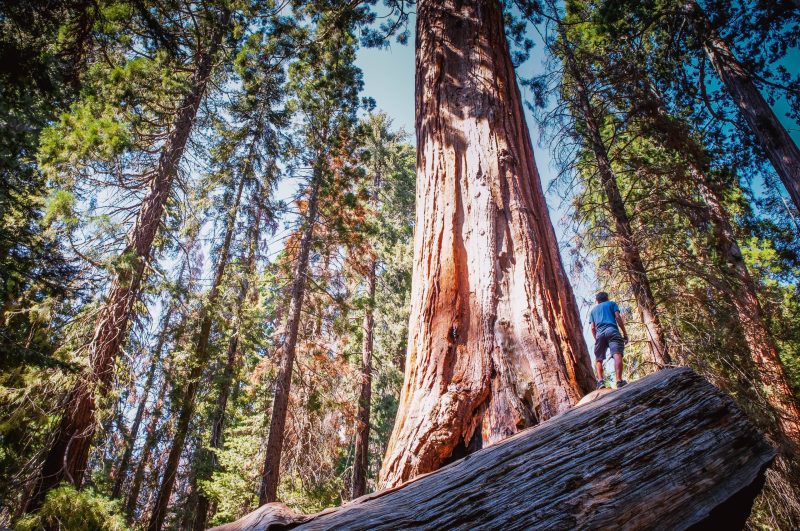
Yosemite Falls
Located in Yosemite National Park in the Sierra Nevada mountains of California, is the highest waterfall in North America and the world’s fifth tallest. The water drops down at total distance of 2425 feet or 739 meters from the top of the Yosemite Falls to the ground. Depending on how much snow fell during the wintertime the water in the Yosemite Falls flows from winter through early to mid-summer. The Yosemite Falls is at its height in spring, when the melted snow plunges over the cliffs into Yosemite Valley and is usually dry during summertime, beginning in August. In winter time Yosemite Falls are especially spectacular when the cliffs are covered by snow, ice, and frost.
-
Did you know that the Yosemite Falls are actually made up of three different falls? The Upper Yosemite Fall (1,430 ft), the middle cascades (675 ft), and Lower Yosemite Fall (320 ft). To walk to the Lower Falls would take you just a few minuets. A hike to the top of Upper Yosemite Fall would take you all day.
-
The collection of waterfalls in Yosemite is one of the most magnificent in the world, 5 of the Yosemite Valley’s falls are among the 10 highest waterfalls on earth. About 95 percent of the park is wilderness, but you can see two of the most famous ones, the Yosemite Falls and the Bridalveil Fall from the floor of the valley.
If you want to get the most of the impressive Yosemite Falls it might be a good idea to go for a hike on the Yosemite Falls Trail. It is a 7-mile round trip and will probably take you 5 hours. There are several spots along the way where you can stop to take pictures or just enjoy the breathtaking view.
Come to see the Yosemite Falls on our Yosemite & Giant Sequoias tour. Stay for one, two or three days in the Park and explore the Yosemite Falls by yourself or together with our experienced guides, who can tell you interesting facts and stories about Yosemite National Park and of course about the Yosemite Falls. No matter which time of the year you are planning to visit Yosemite our van tour will take you to the Park all year long. We are looking forward to seeing you!
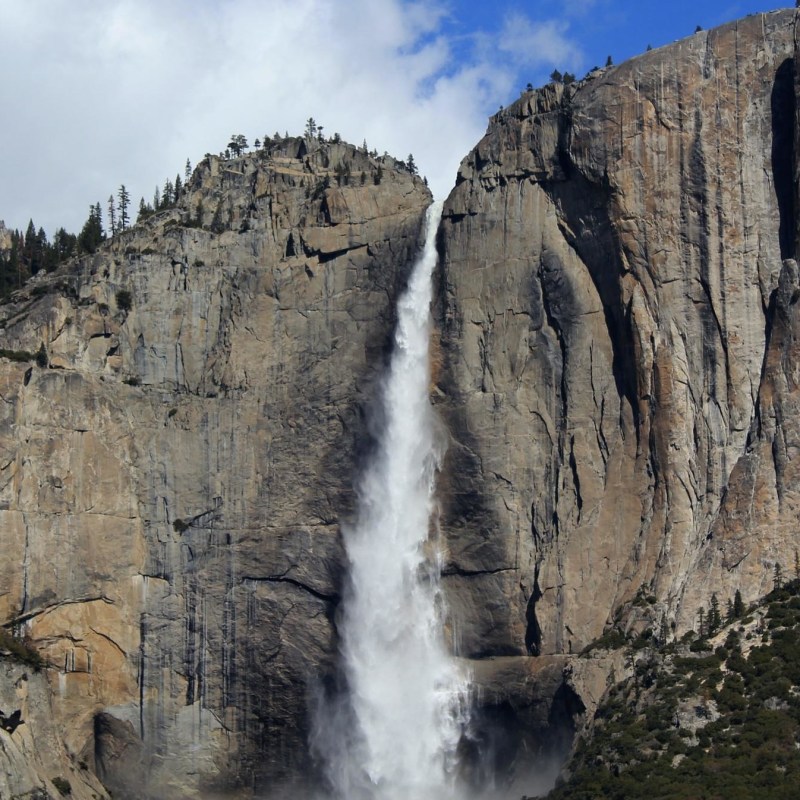
Yosemite California
Yosemite California is the location of one of America’s most famous and impressive national parks. Yosemite California was signed into law by Abraham Lincoln during the Civil War in 1864 as the nation’s first state park.It was not until 1890, due in large part to John Muir’s efforts, that Yosemite California was reassigned to the National Park Service has America’s second national park, after Yellowstone.
Yosemite California attracts close to four million visitors every year. When visiting Yosemite California a tour guide can provide valuable Yosemite information allowing you to focus on the best parts of the park and giving you a more comprehensive understanding of Yosemite California.
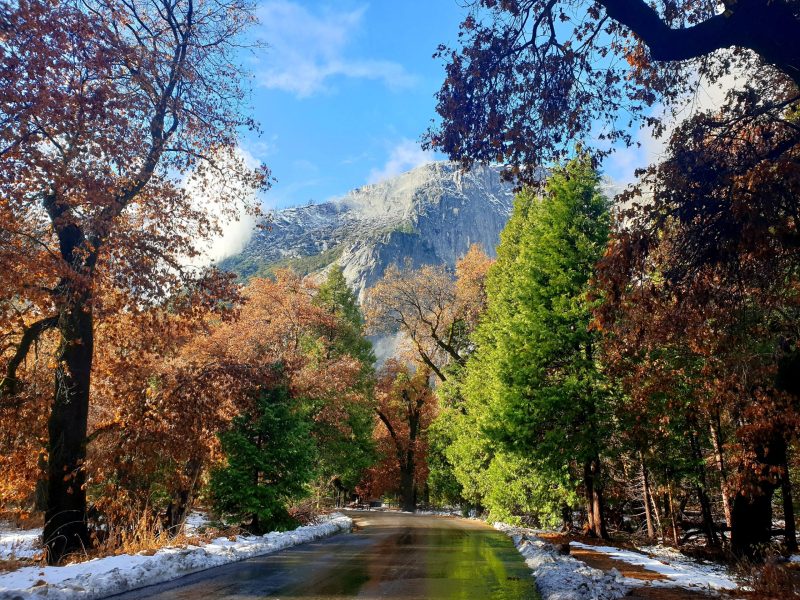
Yosemity, Yosemiti, Yosemity, Yosemitie
Yosemity, Yosemiti, Yosimity, Yosemitie, Yosimite and also incorrectly pronounced Yoh-seh-mait and correctly pronounced Yoh-seh-mee-teh, means in Miwok language some of them are killers.
The Yosemite Valley was called “awahni” by the Southern Miwok which means “place like gaping mouth,” describing the shape of the valley. Those Miwok who lived in the valley were called “awahnichi,” or people who lived in awahni.
Yosemity, Yosemiti, Yosemity, Yosemitie – Variations
The park was named Yosemite by white travelers, who heard the neighboring Miwoks refer to residents of Yosemite as “Yohemite” or “Yohometuk.” There are a number of theories as to why this name was given to them.Perhaps the native people were whispering or shouting the word when they saw new comers there, and the new comers had never known the meaning. Perhaps they were referring to the grizzly bears in the valley. The awahni had a reputation as violent people Regardless of how you spell Yosemite, Yosemity, Yosemiti, Yosemity, Yosemitie, Yosimitie the spectacular scenery on your tours through this incredible national park will amaze you forever.
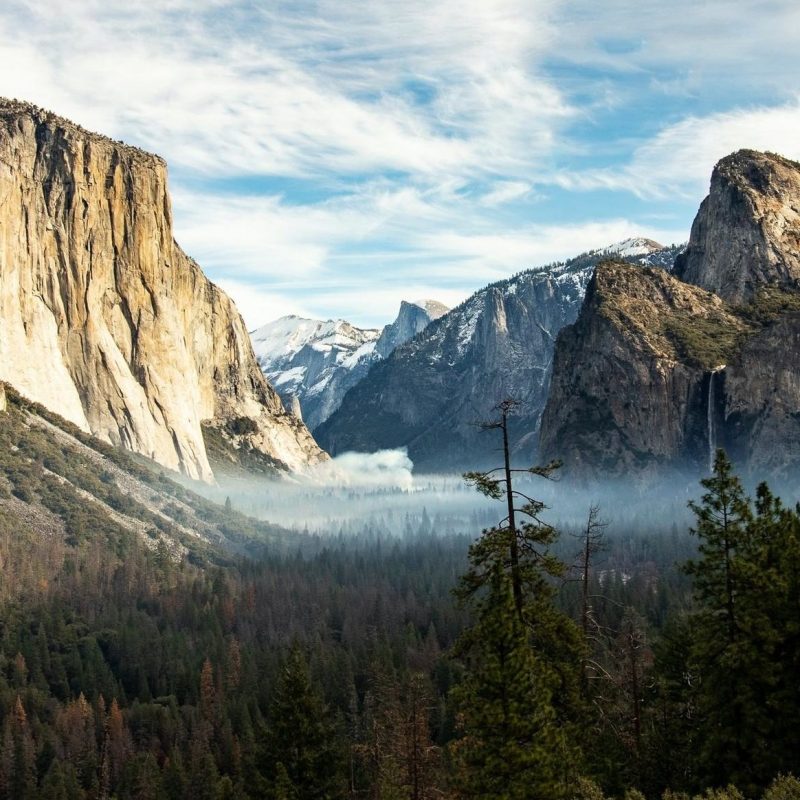
Yosemite's Seasons
Summer (June - September)
Visiting Yosemite national park during the summer will guarantee access to the entire park via car, as the weather warm and snow has completely melted. The average high of Yosemite summer is 87 degrees Fahrenheit. Because the climate ranges from warm to hot and rain is rare, this is the ideal time for outdoor Yosemite camping. However, you will likely have a difficult time obtaining Yosemite national park reservations (see above for details) since this is the most popular season to visit Yosemite.
If you are interested in seeing waterfalls, then plan on early summer (May through June) and you’ll catch the end of peak run off. By August many waterfalls are down to a trickle or are completely dry. Summer is also the ideal time of the year to enjoy the many wildflowers that Yosemite national park has to offer. In Yosemite Valley and Wawona visitors can witness the blooming of redbuds, Sierra onions, lupine, Mariposa lilies, pentstemons, and flowering dogwoods. Not to be outdone, Tolumne Meadows boasts of the following flowers: little elephant’s heads, gentian, pentstemon, yarrow, and shooting stars.
Winter (December - March)
If you are looking for a solitary and peaceful getaway, then winter is an ideal time to visit Yosemite. Driving conditions may present a bit of a challenge but planning ahead should alleviate any potential problems.
Climate in Yosemite during the winter is snowy and cold, ranging from 28°F to 53°F, limiting backpacking options. Backpacking during the winter usually requires the use of skis or snowshoes and some trails may be closed in extreme snowfall. Badger Pass, Crane Flat and Mariposa Grove are popular trails for winter hikers because the roads along these hikes are well maintained.
During the winter, visitors can enjoy downhill and cross-country skiing at Badger Pass. To get the early-bird special rate for season passes, make sure to purchase your pass by October 31st. Ski and snowboard lessons are available at Badger, as are Ski and Stay Packages. Shuttles to Badger Pass are available from Oakhurst.
In addition to enjoying skiing, winter visitors can visit Yosemite’s waterfalls and hike the Yosemite Valley trails. Yosemite Falls is flowing during the winter once there has been some snow and rain.
Fall (October & November)
Visiting Yosemite in the fall months will permit visitors to enjoy the park with reduced crowds. Typically, all areas of the park remain open through October but short-term road closures may occur due to snow.
Temperature during these months may range drastically, from 34 to 54 degrees Fahrenheit, with weather running the gamut from heat to snow. Due to the extreme variance in weather, visitors should be come prepared with snow chains for their car if visiting Yosemite in the fall.
Fall is the best time to visit Yosemite if you are interested in viewing the autumn leaves. Yosemite offers a variety of deciduous trees including big leaf maples, black oaks and Pacific dogwoods, all of which are at their peak in October.
Yosemite in the fall may not be the best time to visit its waterfalls since water levels are usually low during this season.
Spring (April & May)
Yosemite in the spring is the perfect time to enjoy Yosemite’s waterfalls, which are at their peak in April and May. The weather during these months can vary from sunny and warm to the occasional snowstorm. Spring temperature in Yosemite can range between 39°F to 69°F. Warm spring temperatures melt the snow, causing the Yosemite waterfalls to gush with water.
Tioga and Glacier Point Roads typically are closed during the spring months, but Yosemite Valley and Wawona remain accessible year-round. Springtime visitors should come prepared with snow chains for their vehicle, as there still exists the possibility of needing them.
During the spring, visitors can witness the blooming of California poppies, dogwood and redbud flowers. Hiking trails are typically still snow-covered through May but there are snow-free hikes in Yosemite Valley, Wawona and Hetch Hetchy. Backpacking options are still limited throughout the spring.
